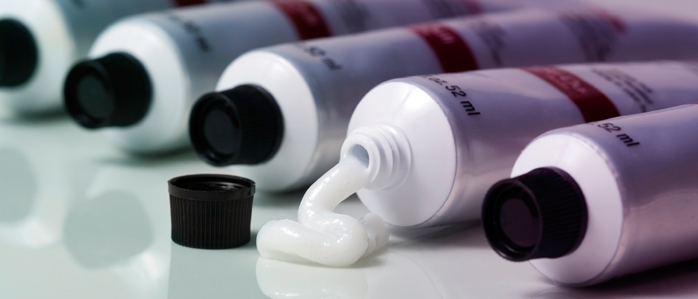
This generation we belong to is getting ahead of itself day by day with all the developing studies, advancements and innovations that it has long been working on. Not only in the field of technology like computers, software and other machines, but also in products and their content.
To be particular, let us take a look at cosmetics and medicine. These two industries have grown fast and progressive; they have invented much a number of treatments and supplements as well as makeups and beauty enhancements.
Creams and ointments have existed in both lines – there creams and ointments for beauty care and at the same time, for pharmaceutical like pain relief, etc. Either way, both of them are emulsions of oil and water but possess a disparate content percentage of the two. Because oil and water don’t mix very well, emulsifiers are added in them.
The Skin As Protection
Skin is the largest organ of the body and it is responsible for protecting everything underneath it. In order to do its job well, it always needs to be hydrated so it can keep the entire human body hydrated as well. And maybe this will be the first time you will hear this but – did you know that the more skin is exposed to water, the more it gets parched and dry? Yes, swimming for quite a longer time than usual seeps out the moisture from your body. And that explains your wrinkled fingers after the soak.
To prevent that, drinking an adequate amount of water will always be ideal. But if you’re still having trouble in keeping the right amount of H2O in your body, you might need aid from creams and ointments. They pretty much do exemplary work as two of the best skin care products.
Knowing that probably left you wondering what their differences are. Here, we have prepared a list of distinctions between creams and ointments. Keep reading!
Creams are water-based whereas ointments are oil-based.
Creams and ointments are both topical medicines applied for external use on skin.
According to eDocAmerica, creams have a balanced proportion of water and oil. This means the composition of creams is 50% water and 50% oil. Much lower oil component than 50% is added to water to form it. However, ointments are manufactured dissimilarly. At an 80% to 20% proportion, oil and water are blended respectively. Hydrocarbons like petroleum jelly or mineral oil comprise its oil component.
The components are mixed well by machines such as homogenizers from Ginhong.
Creams can easily be spread and are lighter whereas ointments are greasy and thicker.
Creams and ointments are known to be packaged inside a tube or circular containers. Most of the time, creams are consumed way faster than ointments. Why? They are inviscid while ointments are viscous.
Because ointments are thicker and greasy, they are also occlusive – not well absorbed, staying on the skin for a longer time. They trap moisture. They possess thicker consistencies, so it is not very ideal to attempt spreading it on large areas of the skin. Meanwhile, creams have lighter consistencies and smoother texture as they are more liquidy. Creams are more easily absorbed and effective in covering the broader portions of the surface.
Creams are best applied on wet skin conditions whereas ointments are most remedial on dry skin.
Although creams are notable for being good moisturizers, their balanced or greater water content with oil makes it suck up the moisture of the skin even more than it hydrates it. They simply intensify skin dryness. With that being said, creams are better used on treating wet, greasy or oily skin conditions like eczema and poison ivy.
On the other hand, ointments are more effective on dry skin conditions such as psoriasis. Its real medicinal factor lies in moisturizing the dry skin which promotes more rapid healing.
Many creams are mixed with sensitizing preservatives; ointments products are best at moisturizing.
Ointment components such as petroleum jelly, mineral oil, olive or jojoba can be well trusted in creating the vanguard of defense on the skin. The most active ingredient of ointments for topical medication is permitted with greater penetration – anti-fungal, antibiotic, steroid, etc.
Creams often possess sensitizing preservatives which are commonly recognized as a good addition to its components, but these are not favorable to those whose skin is too delicate and sensitive.
Creams have a low risk of irritation whereas ointments have a high risk of it.
However, individuals who have delicate skin must use creams instead of ointments for it has milder components. Dermatologists even recommend using it more as it has a lower risk of irritation on the skin, as per Research Pedia.
Conclusion
Creams and ointments are both used for topical medications of the skin. The two formulations vary in the amount of their oil and water components. Although they have several differences, they are both useful in treating skin diseases of different kinds. Learn more about them before buying yourselves some. We hope this article helps!
